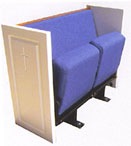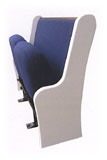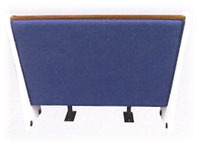Revamping Seating with Pew Combos: Style and Functionality Combined
Seating plays a crucial role in creating a welcoming and comfortable environment in various settings, from religious institutions to event venues. Traditional pews have long been a staple in these spaces, providing seating arrangements that promote community and congregation. However, as the needs and preferences of modern congregations and event attendees evolve, there is a growing demand for seating solutions that offer both style and functionality. This demand has led to the rise of pew combos, a versatile seating option that revamps traditional pews by combining style and functionality in a contemporary and adaptable design.
One of the advantages of combining a pew and a flip up seat design is the ability to blend seamlessly with the aesthetic of any space. Unlike traditional pews, which often feature a uniform and monotonous design, pew combos offer a range of styles, materials, and finishes to choose from. Whether it’s a contemporary look with tight back to back spacing, a classic and timeless design, or a custom-made creation, pew combos can be tailored to match the overall ambiance and architectural style of the church. This versatility allows for a more visually appealing and cohesive seating arrangement, elevating the overall aesthetic experience for congregations and event attendees.
Beyond their aesthetic appeal, pew combos prioritize functionality and adaptability. Unlike fixed pews, which limit seating arrangements and hinder flexibility, pew combos offer modular configurations that can be easily reconfigured to accommodate different event requirements. For example you can have 2 or 3 seat pew combos that can be moved and placed in various configurations in the seat layout. Whether it’s a religious service, a concert, or a conference, pew combos can be arranged in various ways, such as straight rows, semi-circles, or even individually spaced chairs. This adaptability not only increases the functionality of the space but also promotes interaction and engagement among attendees. It allows for a more inclusive seating experience, where congregations and audiences can connect with one another and with the event happening before them.
Comfort is another important aspect addressed by pew combos. While traditional pews can be rigid and uncomfortable, pew combos are designed with ergonomic principles in mind. They incorporate features such as cushioned seats, lumbar support, and ample legroom, ensuring that attendees can sit for extended periods without discomfort. By prioritizing the well-being of those seated, pew combos create an environment that promotes focus, relaxation, and active participation, ultimately enhancing the overall experience for congregations and event attendees alike.
In conclusion, revamping seating with pew combos offers a transformative approach to traditional pew arrangements. By combining style and functionality, these seating solutions bring a fresh and contemporary vibe to religious institutions and event venues. The ability to customize the design, adapt seating configurations, prioritize comfort, and incorporate additional features ensures a versatile and inclusive seating experience for congregations and attendees. Pew combos not only enhance the overall aesthetic appeal of the space but also create an environment that promotes engagement, connectivity, and enjoyment. As the demand for versatile and visually appealing seating options continues to rise, pew combos are at the forefront of revamping seating arrangements, reinventing the way people gather, worship, and engage in events.





